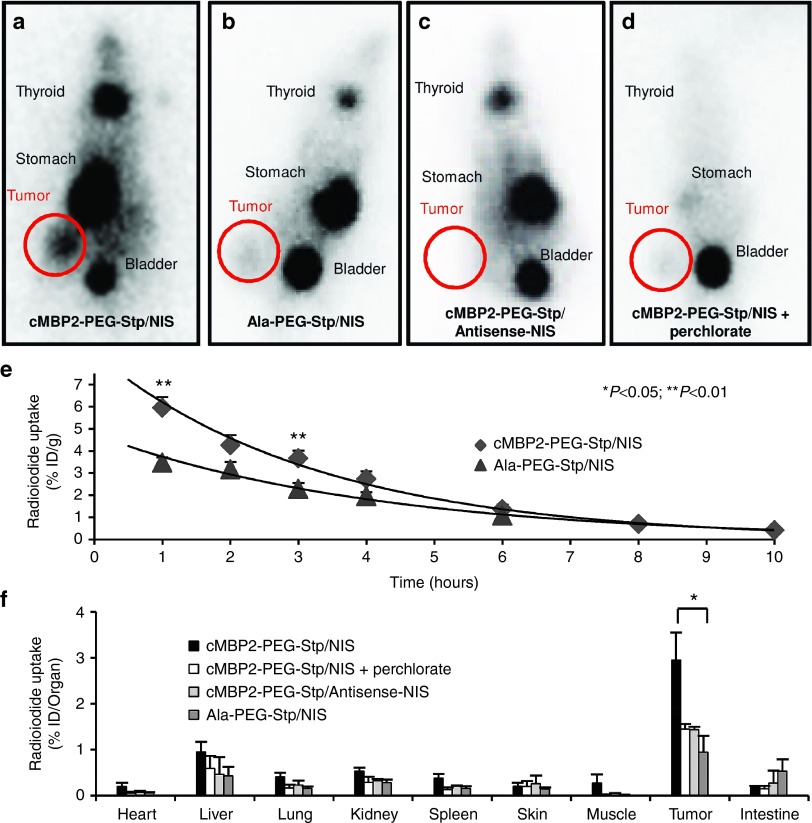Figure 2.
In vivo and ex vivo iodide uptake studies. 48 hours after polyplex administration, vector biodistribution in mice bearing subcutaneous HuH7 xenografts was analyzed by 123I-scintigraphy. Tumoral iodide uptake of cMBP2-PEG-Stp/NIS-treated mice (n = 9) (a), Ala-PEG-Stp/NIS-treated mice, where the targeting ligand was replaced by alanine (n = 5) (b), and cMBP2-PEG-Stp/Antisense-NIS-treated mice (n = 5) (c) was measured 3 hours post-radioiodide injection. A subset of cMBP2-PEG-Stp/NIS-treated mice was pretreated with the NIS-specific inhibitor perchlorate 30 minutes before 123I application (n = 6) (d). Iodide accumulation in tumors over the time and the biological half-life of 123I were monitored by serial scanning (e). Ex vivo biodistribution was performed 3 hours after injection of the radionuclide. Organs of cMBP2-PEG-Stp/NIS-treated mice without (n = 6) and with sodium perchlorate pretreatment (n = 3), Ala-PEG-Stp/NIS-treated mice (n = 3) and cMBP2-PEG-Stp/Antisense-NIS-treated mice (n = 3) were dissected and 123I accumulation in single organs was measured by gamma-counting (f). Results are reported as mean ± standard error of the mean.

